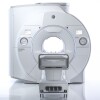Inside one ISO's right-to-repair battle with a leading MR manufacturer
In that report, the FDA called on in-house, independent, and OEM equipment stakeholders from the public and private sector to proactively work together in Collaborative Communities to solve shared problems, as well as problems unique to other members, in an environment of trust and openness. In 2020, MITA and AdvaMed announced they would no longer be participating in those efforts, but other OEM representatives have remained in the group.
Since then, the FDA has turned its attention toward "remanufacturing" activities, and what distinguishes them from "servicing" activities. The industry is still waiting for final guidance on that.
We repair MRI Coils, RF amplifiers, Gradient Amplifiers and Injectors.
MIT labs, experts in Multi-Vendor component level repair of: MRI Coils, RF amplifiers, Gradient Amplifiers Contrast Media Injectors. System repairs, sub-assembly repairs, component level repairs, refurbish/calibrate. info@mitlabsusa.com/+1 (305) 470-8013

In 2021, the FTC issued its own report, Nixing The Fix: An FTC Report to Congress on Repair Restrictions, which seemed to further support the 2018 FDA findings, and in a context above and beyond medical devices. The FTC concluded that proponents of repair restrictions did not provide sufficient data to support their argument that safety issues could occur because of repairs by consumers or independent repair shops.
One reason ISOs are popular with healthcare providers is because they can often provide affordable service contracts on older technology. The Center for Healthcare Quality and Payment Reform reports nearly 30% of rural hospitals are at risk of shutting down due to financial challenges, so it isn’t surprising that the issue of right-to-repair resonates with those communities.
"In rural areas, having a repair person nearby is less likely,” U.S. Representative Morgan Griffith (R-VA 9th District), recently said. “Being forced to use only the manufacturer’s representative could mean longer wait times for hospital and doctor’s office equipment to be repaired."
In the consumer space, California's Right To Repair Act was recently signed into law, requiring manufacturers to make appropriate tools, parts, software, and documentation available for their products for three to ten years, depending on the cost. That legislation was notably supported by Apple, a company whose Genius Bars have long made them synonymous with manufacturer-only service.
Two companies at odds
If the big picture suggests right-to-repair advocates have the wind at their backs, the outlook remains uncertain for Image Technology Consulting. Even if the court recognizes Shannon as a competent ISO with an FDA-regulated right to Philips equipment service documents, it’s not clear if the DMCA medical device copyright exemption will be enough to dismiss all of the allegations for accessing software without authorization.
A similar case in the Western District of North Carolina between Philips and TEC Holdings (or Transtate, which is now part of Avante Health Solutions) could offer clues into how Image Technology Consulting’s case may shake out. When Philips claimed Transtate stole intellectual property and hacked software without credentials, Transtate countered that Philips refused to provide necessary information and wanted to shut others out of the parts and service repair market.
A federal jury ruled that Transtate did not misappropriate Philips trade secrets, but would still be on the hook for violations of the DMCA. If affirmed on appeal, Transtate may have to pay Philips over $1 million in DMCA statutory damages, or approximately $500,000 in actual damages added to over $3.5 million in profits, (totaling over $4 million) for 941 DMCA violations.
Transtate, in turn, was awarded over $2.5 million in damages due to Philips "unfair and deceptive trade practices" based on its "refusal to provide documents, programs, or information necessary to perform repair and maintenance on systems, in a timely or unhindered manner,” according to court documents.
Shannon says that Image Technology Consulting has lost over a million dollars litigating its case, as well as service contracts, employees, partners, vendors, and long-term customers.
"Philips has hired a team of high-priced lawyers to flood me with motions, made discovery drops of over 400,000 documents in an attempted proceeding, not designed for redress, but in my opinion to attempt to control or monopolize the market," Shannon wrote in a GoFundMe page to raise money for his legal expenses. "Of course, I am working with the FDA and other government agencies but while I’m in litigation I can expect little help with getting answers to the claims Philips is making that I believe are false."
Shannon's lawyers are again seeking a dismissal of the case, this time based partly on the Library of Congress DMCA exemption for medical devices. In October 2023, the U.S. Copyright Office announced it would be recommending a three-year renewal of the exemption. Four organizations filed petitions to oppose the renewal: The American Consumer Institute, MITA, AdvaMed, and Philips North America.
Back to HCB News

As to safety, as noted, there is very little difference in the safety record of OEMs vs In-House vs Third party. Only in the ability to cover it up. The performance bell curve fits all of the above. Both as an instructor for a big OEM and an In-House imaging servicer, I have seen the whole range of performance in both settings, whether hospital, third party or OEM servicers and called it out for praise/condemnation as appropriate. Both have great and bad and every level in between. The advantage is the OEMs can take a crappy warm body and feed it answers from a good support center; they are not willing to do this for just anyone. But they should and do for a fair price. Keys and access, there is not much real cost to provide these electronically, they were needed to develop the product and support their own engineers. The ask currently is really far from reasonable to smaller sites/independent servicers. As a Philips CT instructor said in front of a mixed class I was in, "FDA says we must give them [non-Philips servicers] the tools under FDA, but we don't have to make it easy for them" when asked why the tools were different/more integrated for Philips servicers compared to the limited if even available AIAT level of tool. Some that should have been available under AIAT were very hard to find if they were even provided.
|
|
You Must Be Logged In To Post A CommentRegisterRegistration is Free and Easy. Enjoy the benefits of The World's Leading New & Used Medical Equipment Marketplace. Register Now! |
|

















Steven Ford
Philips and Right to Repair
November 22, 2023 09:59
It's not just 'right to repair' in the sense of fixing something that's broken which is at stake. The restrictions that OEMS place on medical equipment software prevents the owner-operator of the equipment from confirming that their scanner is operating properly. In many cases, a clinic has no mechanism to ensure that the device is operating within specifications or operating safely. This is obviously not a good policy for anyone but the OEM.
Industry veterans know that this is not just a hypothetical risk, but many of us can cite repeated examples where OEMs have deceived the public and covered up failures of scanners under their exclusive service, because there's no possibility of 3rd party oversight nor even oversight by the equipment's owner. This is a health and safety hazard and should be changed.
to rate and post a comment